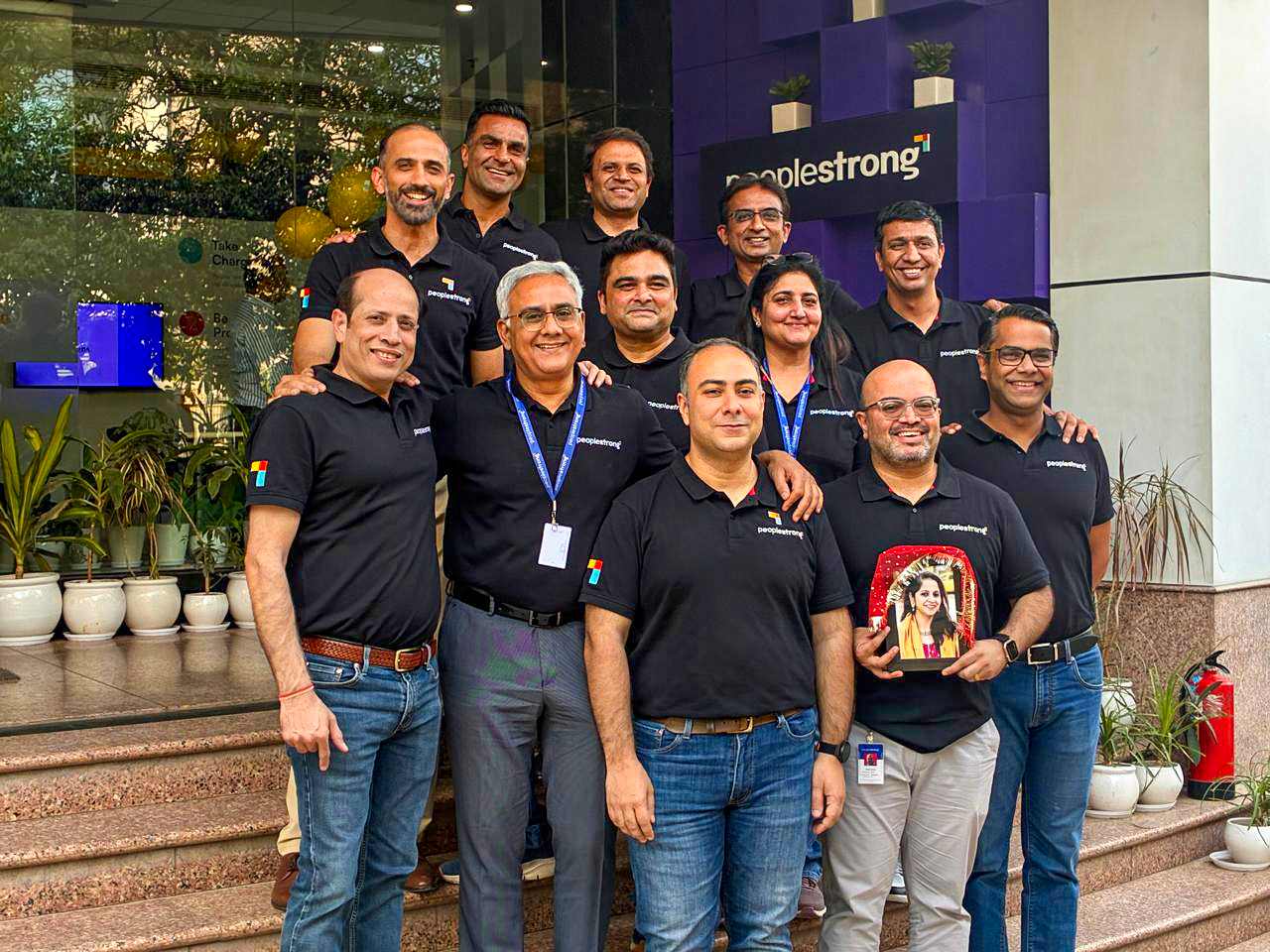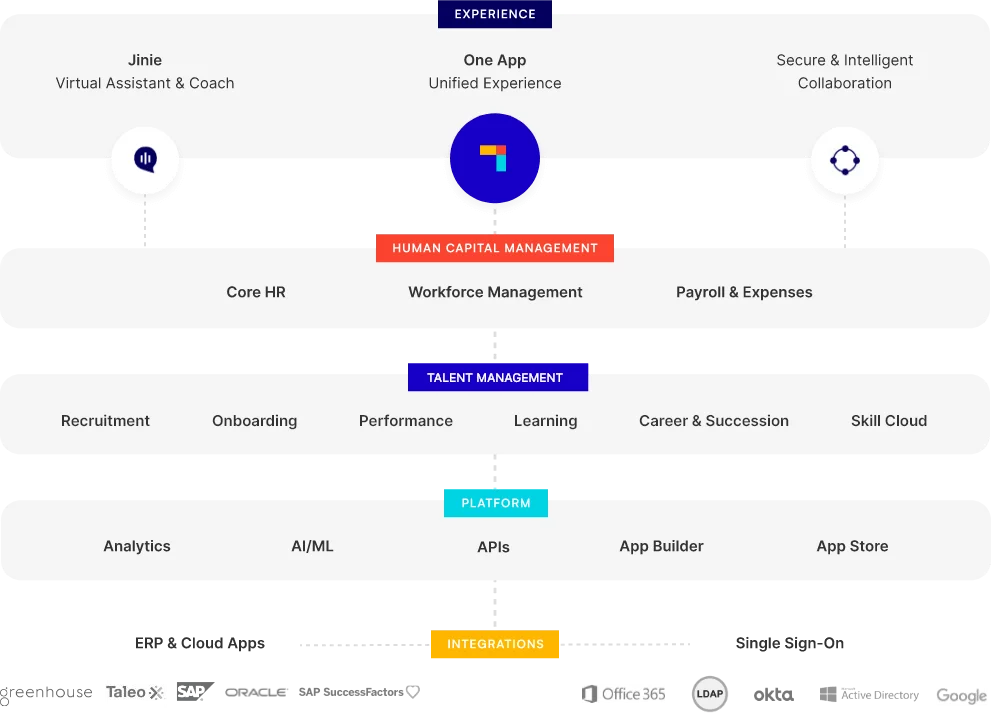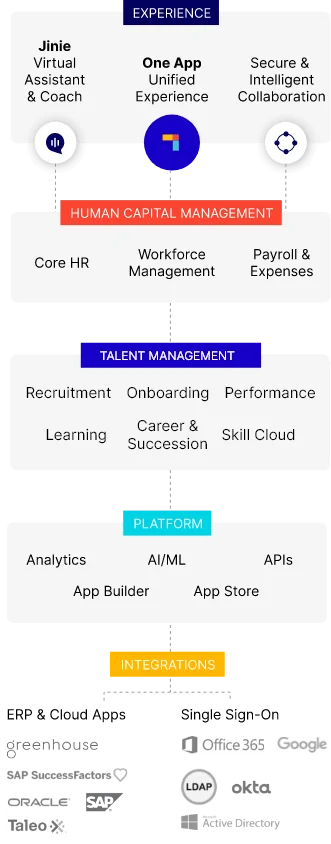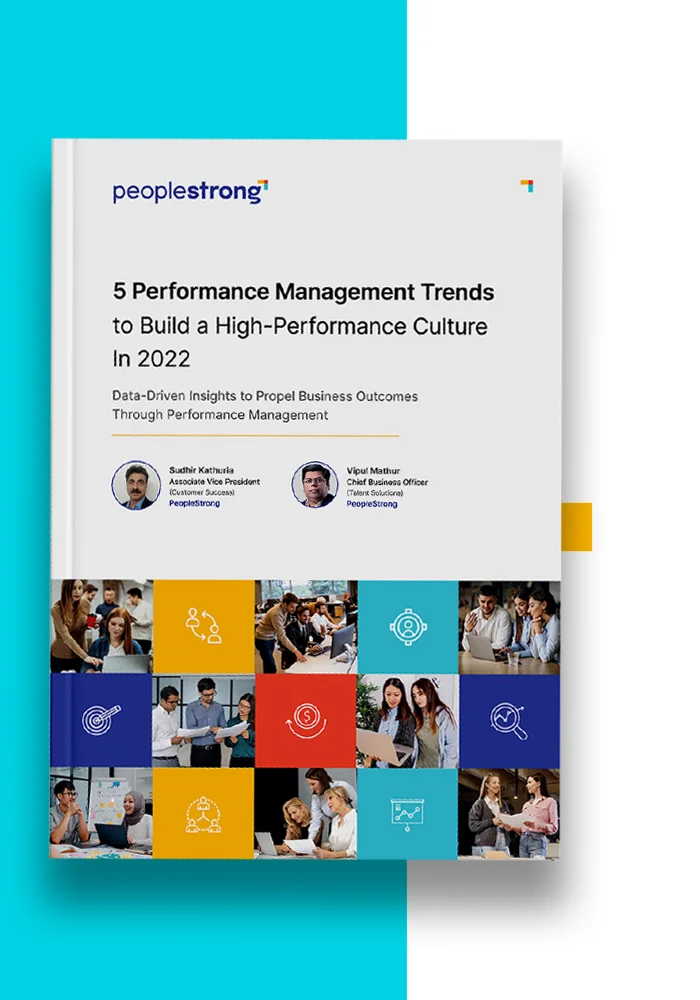An effective talent management strategy is meant to develop a pool of talent, as a resource to meet identified needs, with support from the highest level, activities developed with HR policies and practices.
The diverse talent mix we have today has the potential to impact innovation in an unprecedented way, and keeping them interested in your organization is a task that needs the fullest efforts in every way possible.
The 2023 PwC study shows employees have an increased intention to change jobs in the next 12 months in the Middle East, and having a strong talent management strategy is going to definitely get more of these people actively engaged with your company, and give their best to you for years to come.
At present, only 87% of leaders in the Middle East believe developing or revamping their workforce model is important to sustain in the long run, but only 24% of leaders feel their organization is ready for such a change. Since talent management encompasses workforce strategy, creating a future-ready talent management strategy is pivotal to staying relevant and competitive in the business landscape.
In this blog, we’ll go over how to craft a rock-solid talent management strategy step-by-step, so you leave no stone unturned and reap all the benefits of having a dedicated workforce who will go to the ends of the Earth to get results for you.
Suggested Read: The Ultimate Guide to Talent Management
Importance of Having a Talent Management Strategy
- Helps make proactive career advancement possible for every employee, including learning and development efforts.
- Creates a learning culture and your innovation well never dries out
- Ensures there’s a robust career development plan chalked out for every employee and room for growth no matter where they are. The 2023 PwC study shows that about 54% of respondents in the Middle East believe that their employers will help them upskill, reskill, and apply their newly acquired skills to work.
- Offer the ultimate perk of development to attract A-list talent especially when facing a talent crisis.
- Helps explore new avenues of business, with the help of a rich talent pool.
How to Craft a Talent Management Strategy?
Danny Kalman, the former Global Director of Talent at Panasonic, says, “Aligning talent management strategy with the business strategy because maximising the talent of individual employees is a unique competitive advantage.”
1. Get the leadership team aligned with your vision
Once your workforce strategy and the macro business strategy are frozen, take time to translate business objectives into high-level corporate ones. Make sure each business objective has an implication for the types and the number of talent needed across the board.
Set enterprise-level objectives, along with objectives for each horizontal and vertical function, and encourage the board to review and sign off on it. Talent management is all-pervasive and needs to start at the top. So, getting the leadership team aligned with the personnel vision sets a strong context for the next-level managers, and helps make ripples in the organizational culture.
2. Take stock of your internal skill supply
Determine which parts of the current workforce can fill selected positions within the company. Who among your existing employees can up their game in the short run, without much effort? Who needs extensive coaching to enhance their skills in the long term but when done will make for an excellent investment for the company’s future?
Who has demonstrated initiative in stepping up for the company, taking up things outside of their comfort zone, and finishing them successfully? Look for specific skills and behaviors across the workforce and those who are willing to convert them into actions and results to improve your organization’s competitiveness.
Employees recognize the link between upskilling and job success in the next five years, as suggested by the 2023 PwC study. So, regardless of which role they are in, they’d need skills to boost their performance and push them to the next level. The prudent way of doing this would be to map their current capabilities and see how best to meet these upskilling needs without investing a huge sum in training and development.
If the current capabilities can’t be upped by internal resources, you are looking at a talent gap.
3. Determine an action plan to fill the talent gap
In this stage, you’ll need to figure out whether to look internally for talent or hire from outside. Is there a talent shortage or abundance within the company? What should you focus on in the present to ensure future leaders and future talent management are taken care of?
When assessing the talent gap, consider whether to focus on investing in highly competent individuals, enhancing skill development to boost performance, or improving the organizational culture to naturally bring out the best in everyone. Once you have identified the gaps and quantified the needs, communicate this information to the CEO and the board, either directly or as part of the regular operating review process.
4. Clarify roles and prepare the base for a strong talent strategy
This is the phase you formulate a strategy that organically sets a nurturing, and warm environment in the workplace, to attract sterling talent, break down walls hindering performance, and create processes that unleash the best in people. In this process, you figure out employee engagement initiatives required to ensure line managers inculcate practices into the culture and daily practice, set milestones to measure progress, and timely review mechanisms.
Address overlapping duties and areas where boundaries tend to get blurry. Check if there’s duplication of work, chances of a task or process being carried out both manually and with a tech stack, employees having two or more managers to report to, and a hazy chain of command.
Map out the following carefully for each role to bring in role clarity:
- Roles and responsibilities, and level of ownership for each task
- Functional manager, skip level manager
- Cross-functional responsibilities
- Interfaces – people/departments they interact with regularly
- Behavioral, functional, and cross-functional competencies required
5. Set metrics for tracking the effectiveness of the strategy
The following metrics will give you a fair picture of how the new talent management strategy is playing out amongst your workforce:
- Supply of sufficient number of skilled people to the required business units on time
- Reduced turnover
- Increase in employee satisfaction
- Climbing customer satisfaction, and ROI on training initiatives
- Marked reduction in talent gaps
- Significant contribution to shareholder value
- Operating results (revenues, cost, and profits)
- Customer results (acquisition, retention, penetration, and delight)
- Improvement in quality of relationships among employees (working relationships with employees, team playing abilities)
6. Identify how talent strategy impacts HR
Any major strategic change has a cascading impact. Assess how much of an impact the new talent management strategy has/will have on HR processes. Check how many new helpdesk tickets you get, what processes use minimal resources now, how far have the cost of candidate acquisition, retention, and deployment gone down, and how quickly are open positions being filled.
Simultaneously, determine if the organization has secured top industry talent for new ventures or market expansions. Assess the impact on hierarchy and organizational design after implementing this radical talent management strategy. Will it necessitate changes? Seeking answers to these questions will better prepare you to handle any challenges that arise.
7. Check if your people are ready to climb to the next level
Who better to assess your employees’ readiness for increased responsibilities than their own managers? With the training you’ve provided to managers, they are likely operating in the best interests of both the company and their teams. Gather their input on staff readiness—identifying who has the potential to assume higher positions and who needs more time to develop.
Encourage managers and their teams to conduct a SWOT analysis, identifying key players, potential future leaders, and areas for improvement. This process helps to pinpoint irreplaceable team members and those who show leadership potential.
Exceptional performers, who have outgrown their current roles, can become restless and susceptible to headhunters’ offers. By providing growth opportunities aligned with both organizational and personal goals, you can increase their motivation, improve their skills, and prepare them for more challenging tasks. This approach also simplifies succession planning, ensuring a smoother transition when key positions need to be filled.
About 83% of employees in the Middle East consider leadership skills important for their growth and realise how crucial inculcating these skills is for their careers.
Do not consider potential without proof of performance. There are three categories of potential, as highlighted by The Leadership Pipeline by Ram Charan, Global Advisor to CEOs & Corporate Boards, and identifying them early on will help you drive the strategy:
| Turn potential | Growth potential | Mastery potential |
|---|---|---|
| Able to do the work at the next level in 3-5 years | At the same level in the near team | Currently being done, only better |
Appoint these individuals to new leadership positions to create a performance gap. Since they’re moving to a different role with a higher set of skills, they won’t be able to deliver immediately upon taking up the new role and start showing results right away. That’s where coaching and development step in. Test whether they can handle additional responsibilities and demonstrate a willingness to go the extra mile and take on new tasks. There will always be performance gaps, a robust talent management strategy must warrant a gap all the time, so there’s always room for growth.
8. Engage Stakeholders Across the Organization
Chalk out a communication plan to roll out the new strategy to your workforce, and incentives to make them adopt the new scheme of things, with less friction as possible. But, that’s just one-way communication. To get real buy-in from all levels, you need internal advocates or champions for your cause – to drive the new talent management strategy.
This can be line managers, team leaders, and influencers within the workforce who can get employees’ attention, and influence them. Communicate the purpose of the program, changes to be expected, a timeline of changes, and benefits to individual employees, teams, and the organization as a whole. The Talent Handbook for Competency-based Growth shows the three-pronged benefits that you could use to drive the execution of the strategy:
| Benefits to senior management | Benefits to HR managers | Benefits to employees |
|---|---|---|
| More skilled workforce | Faster and hassle-free HR processes | Clear job roles |
| Increase in productivity | Increased ROI from change management initiatives | Structured career path |
| Meeting business objectives more than ever | Targeted L&D | |
| Improved organizational effectiveness |
Examples of Companies with Amazing Talent Management Initiatives
Here are a few companies that exhibit truly progressive talent management strategies and present a growth-conducive environment for their employees.
Kuwait Petroleum International
The company partners with several leadership development organizations to develop its internal talent pool. This includes the experiential learning program with Impact International, where people from Kuwait Petroleum International’s offices around the world come together to improve three core competencies required to contribute to the company meaningfully – strategic direction, commercial orientation, and customer focus. These competencies are developed through self-reflection inculcated by outdoor and indoor group activities, and CSR projects, where people from all departments come together for a common cause.
The emphasis on self-reflection drives home the fact that this type of learning tends to stick with the individual which later translates to better organizational performance. It strips away the technical aspects of the role and focuses on the core element of behaviours that drive performance.
The Emirates Group
The Emirates Group recruits people from all over the world. They’re a transnational company but follow a simple organizational structure to allow free collaboration across departments. For Emirates Group, developing internal talent is crucial, to a great extent more important than hiring super-skilled candidates from the industry. Consistent, regular performance reviews are a huge priority.
Managers take note of critical incidents of exceptional employee behavior regularly to observe the impact on customer satisfaction, and on organizational performance overall. New hires and existing employees are constantly trained on different skill sets, so they will be able to take part in cross-functional projects and develop as all-rounders, so there’s never a dearth of talent when the business requires it.
Reasons why most talent management strategies fail
A healthy talent management strategy ensures the right skills are placed in the right numbers right where they are needed, and knowledge and practices to do the same are disseminated throughout the organization. Without a solid strategy, workforce planning and talent planning are moot.
- Not aligning competencies for business objectives with individual talent and aspirations
- Underestimating global managerial groups in transnational firms
- Taking talent management initiatives less seriously, and reviewing them yearly once or once in a few years
- Managers don’t recognize the importance of developing people working under them and are too task-focused
- Not having CEO buy-in and investment in talent management
- Leadership pipeline clogs when gaps between performance expectations and actuals are allowed to exist for a long time
- Managers fall back on old and familiar behaviours to produce the same results
- Selecting the wrong person
- Defining jobs poorly
- Leaving poor performers in their jobs too long without remedial actions
How Can PeopleStrong Help?
Given how critical the talent management function is, you need a team of seasoned experts to help you brainstorm HR process improvement, visualise the ideal employee lifecycle you want to create for your workforce, and show you the infinite possibilities you can have with the help of technology.
PeopleStrong will help you ideate with experts by your side, and bring in the A-team to carry out the end-to-end agile implementation of our talent management software in a short while, without any operational disruption, so you can seamlessly transition from your existing talent management process to the next level with no friction, while also future-proofing it with AI.
Contact us today, to schedule a free demo and get a headstart on your talent management initiative.













